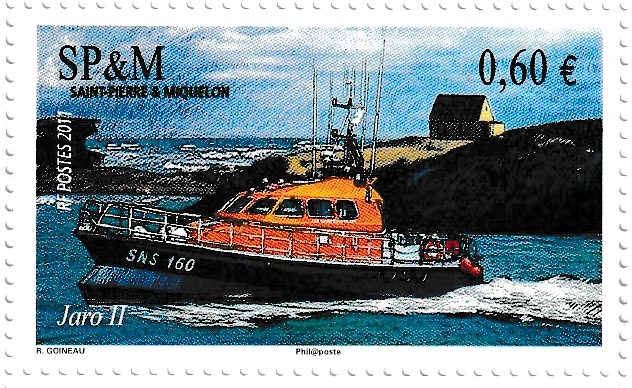| The first lifeboat is born in South Shields, on the east
coast of England in the late 18th century. Originally, the modest means of
rescuers consisted of oar canoes 34 to 35 feet (10.66 m) long, 9 '6' '(2.9
m) wide with a limited range of action. Canoes are launched from a cart off
a beach. This type of boat has however many defects: a heavy and straight,
narrow keel, which made the boat unstable during a capsize. The first boats
appear in England after the founding of the Royal National Lifeboat
Institution, by Sir William Hillary, a philanthropic officer from the Isle
of Man. |
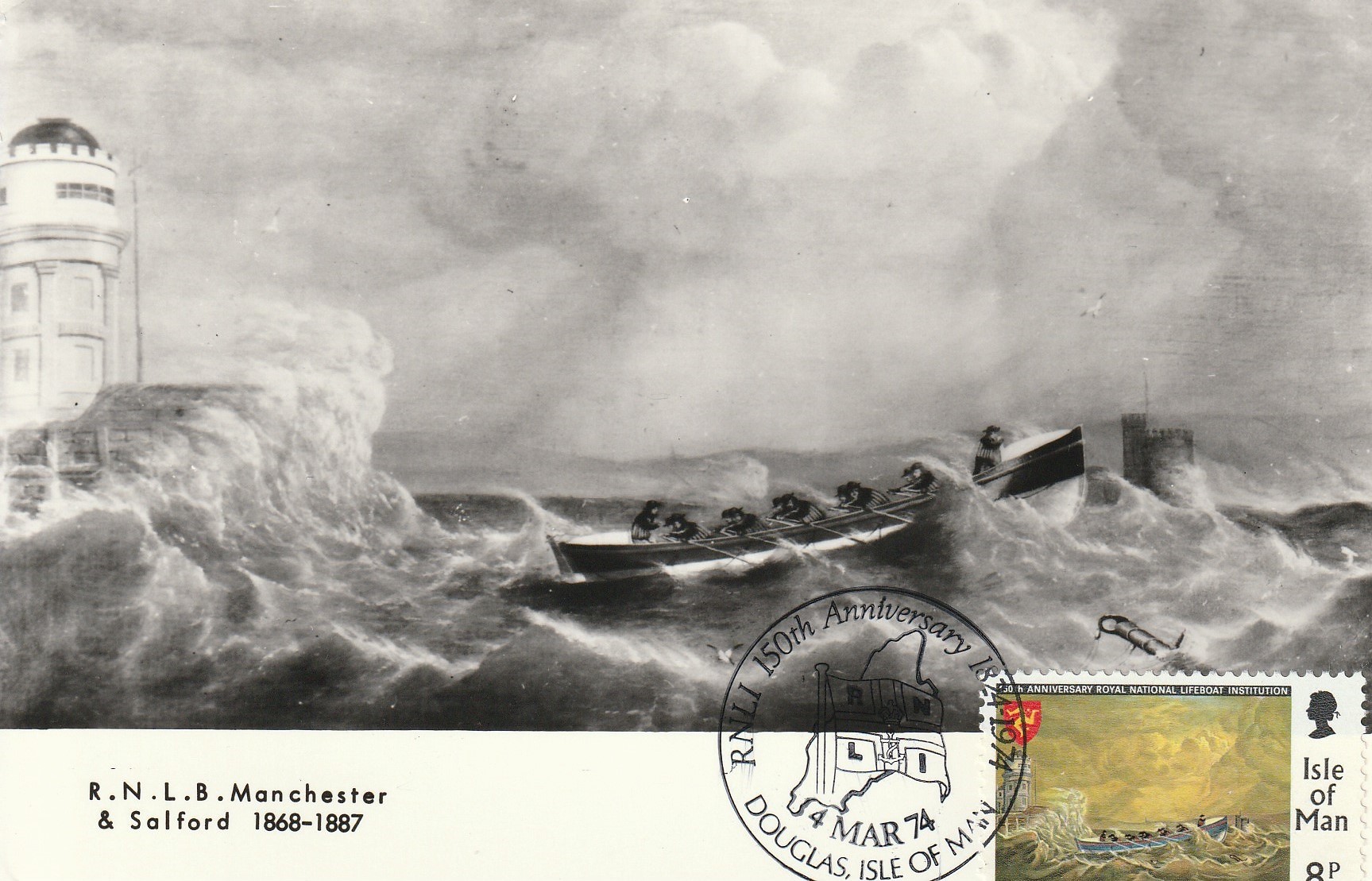 |
Date of issue:4/03/1974
Editor of postcard: Manx Museum
FDI postmark Douglas (Isle of Man) She was lost on a mission to a ship in
distress in December 1886. The stamp shows a painting from the Isle of Man
museum. |
E : 15/01/1974
Editor of
postcard: RNLI
FDI postmark Guernsey
The first lifeboat station in
Guernsey was established in 1803. In 1875 John Lockett , 32 feet long (9.75
m) was manned by 10 rowers. It was used until 1929. |
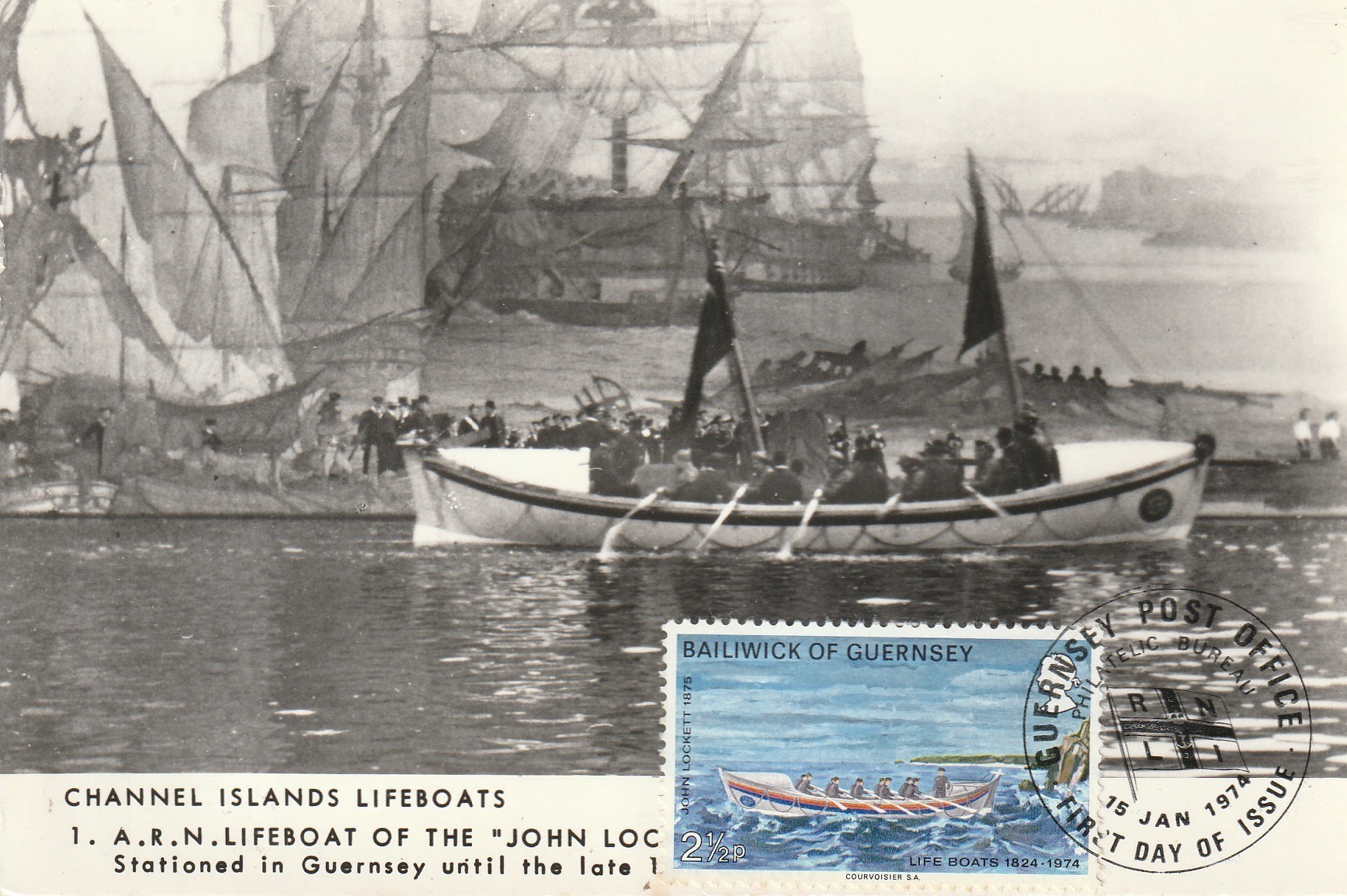 |
 |
Date of issue:03/05/1990
Editor of
postcard: DGzRs
FDI postmark Bonn
The German company Deutsche Gesellschaft zur
Retung Schiffbrüchiger (DGzRS) was founded in Kiel on May 29, 1865. Trunks,
shaped like a boat, are used to collect funds. |
E : 15/01/1974
Editor of
postcard: RNLI
FDI postmark Guernsey
Arthur Lionel, the last rowing
and sailing lifeboat (before the arrival of motorized boats), served the
island for 17 years. Weighing 3.5 tonnes, it is armed by 12 rowers. |
 |
| |
|
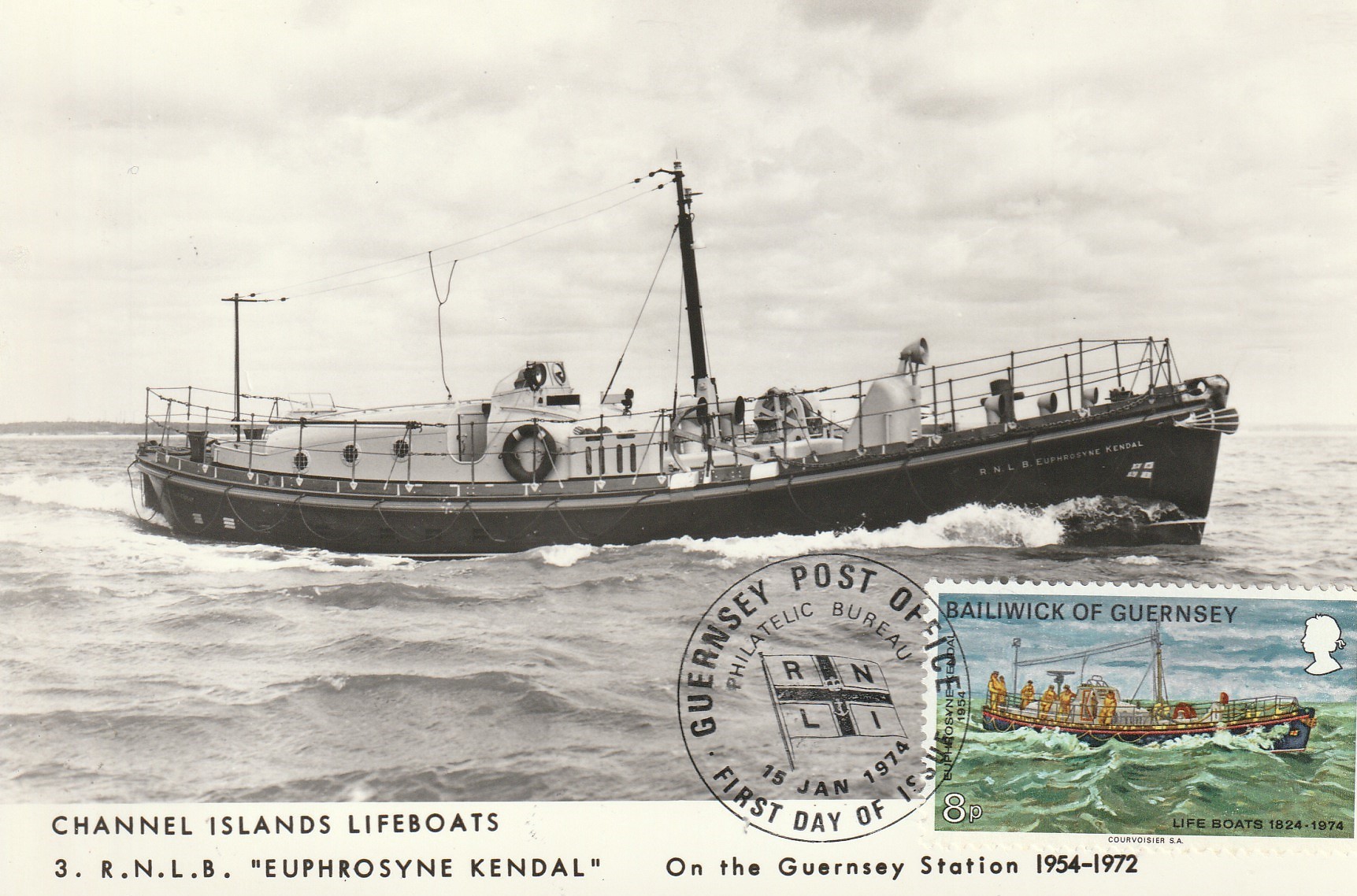 |
E : 15/01/1974
Editor of postcard: RNLI
FDI postmark Guernesey
Euphrosyne Kendall arrived in G uernsey in 1954. It was equipped with 2
Diesel engines giving it a speed of 9 knots, with a range of 180 miles. With
7 to 8 crew, she was based in the port of St Peter until her retirement from
service in 1971, after 162 missions for 173 lives saved. In 1887, the
architect George Watson became a consultant to the RNLI and introduced a new
type of boat, 42 'long, moved by sails, more stable. In 1890, the first
lifeboat equipped with a steam engine was launched and in 10 years, the RNLI
acquired 5, 50 'long, covering distances greater than sail and oars. |
| |
E 1/06/1984
Editor of
postcard: RNLI
FDI postmark Jersey
Elizabeth Rippon arrived in St
Helier ( Jer sey ) on October 14, 1948 and during her career, until January
27, 1975, ensured 141 missions including 57 searches, 6 ships and 66 people
rescued. 14.3 m long, she was first powered by two 40 HP engines before
being re-powered in 1966. She was the first boat in its class to be fitted
with a cabin. |
 |
|
European countries now have modern, fast equipment. In France, the Société
Centrale de Sauvetage des Naufragés was founded on February 12, 1865. In
1873, Buffon's great-grand-nephew was at the origin of the Society of
Hospitallers Breton rescuers. The two companies merged in 1968 to form the
Société Nationale de Sauvetage en Mer. |
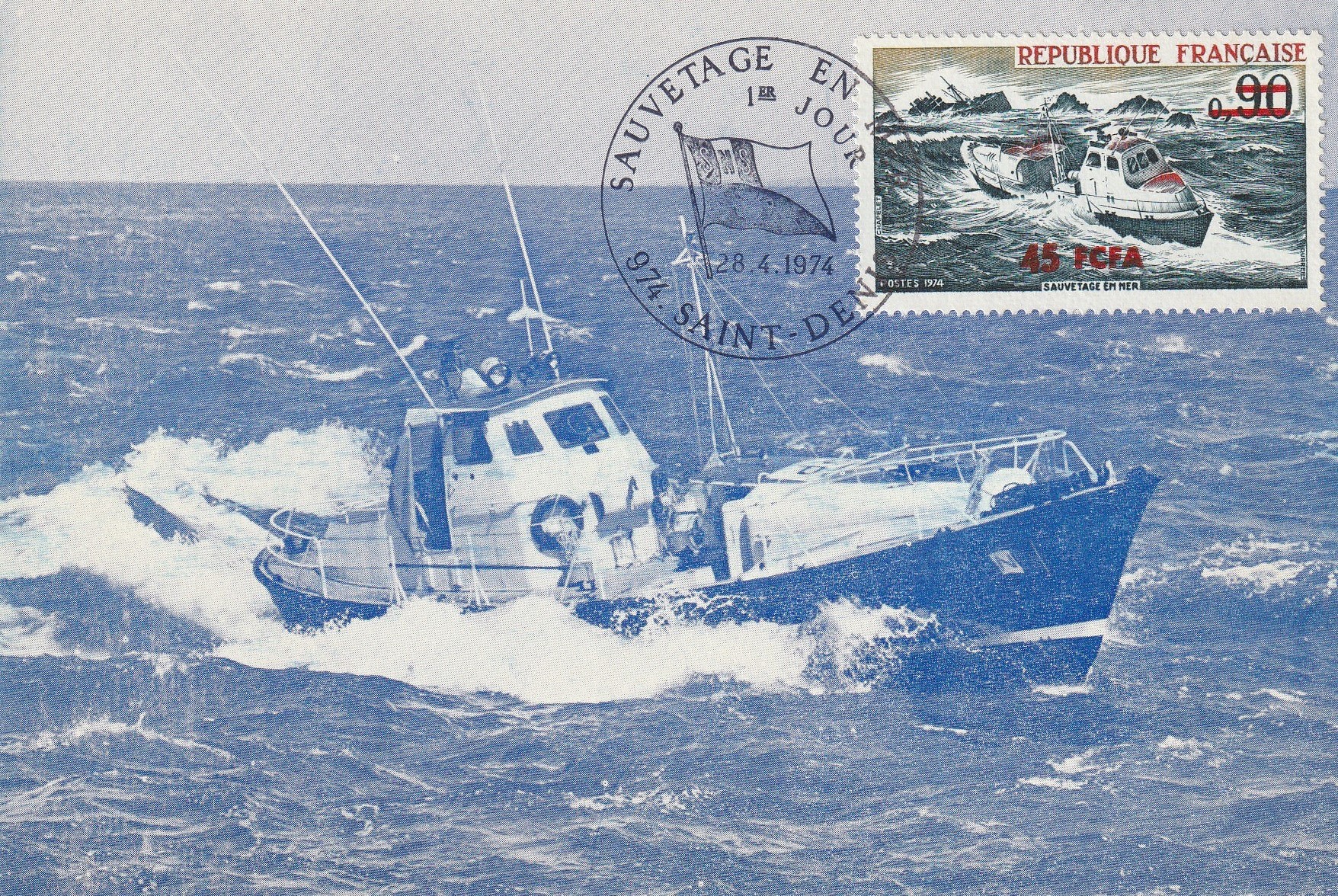 |
E 28/04/1974
Editor of postcard: PAC
FDI postmark Saint-Denis de la Réunion
The stamp shows the "every weather" prototype boat, with steel hull, coming
into operation in 1971. She measures 15 meters and her tonnage is 20 tons.
She can move at a speed of 15 knots, thanks to 2 engines of 250 HP . The
Pierre Loti, built in 1973, equipped with 2 Diesel engines of 265 HP reaches
a speed of 14.5 knots. She is based in Saint-Jean-de-Luz until replacement
in September 99. |
Date of issue: 23/05/2017
Editor of postcard: Jos
FDI postmark Brest
The SNSM manages a fleet of nearly 760 nautical
resources, including 41 all-weather canoes. From 1987 to 2003, 37 canoes
(from SNS062 to SNS099) were put into service. All-weather canoes are
recognizable by their green polyester and CVR (glass-resin composite) hull
and their SNS 0nn registration. The 17.60 m lifeboat has a pneumatic on the
cabin. The all-weather canoe is unsinkable and self-righting. Her bow allows
high speed even in rough seas. She is equipped with 2 engines of 330 HP at
500 HP and reaches a speed of 22 knots at 25 knots.
The SNS076 President
Jacques Huret is part of the 17.60 m all-weather canoe series, started in
1980. |
 |
 |
Date of issue: 23/05/2017 (ATM)
Editor of postcard: InBird
FDI
postmark Vannes
SNS064 Présidents Joseph Oulhen is assigned to the
Aberwrac'h station The Presidents J. OULHEN all-weather canoe is 17.60 m
long. She was built in February 1988 at the BERNARD shipyards in
Locmiquélic, she was re-engined in 2004 and is equipped with 2 480 hp
engines with two 1500 litres tanks to feed them. She has a speed of 19.5
knots in calm weather, 14 to 15 knots with winds of force 6 to 7 Beaufort. |
E 30/07/1974
Editor of
postcard: Cees van der
Meulen
Obl 30/07/1974 Gravenhage (The Hague)
The Royal Dutch Rescue
League (KNRM) was created in 1991 by the merger of the two companies founded in
1824. It maintains 45 stations along the coast of the Netherlands. Suzanna a
20.75 m long boat, with a steel hull and aluminum superstructure, reaches a
speed of 10.6 knots and has a range of 1500 miles. Commissioned on December
14, 1968, she provided service to the Helder station (at the northern end of
the province of North Holland) for 30 years before being replaced by a
semi-rigid on September 20, 1997. |
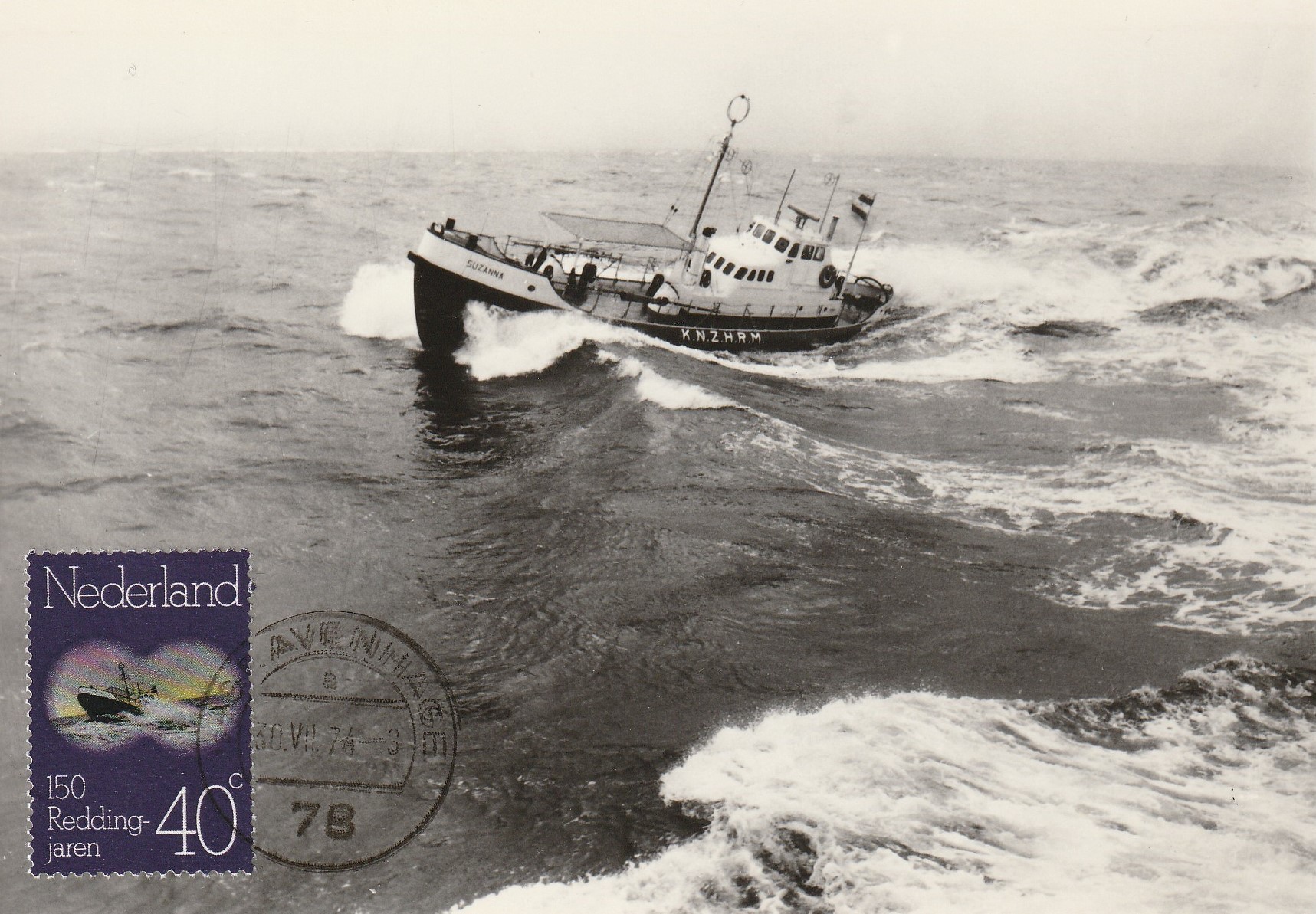 |
 |
E :15/05/1999
Editor of postcard:KNRM
FDI postmark Ijmuiden (Headquarters
of KNRM)
Christien is a semi-rigid e n service since 1993 along 14.40 meters
. In 2003, the Christien was transferred to the reserve fleet. |
E 29/05/1965
Editor of
postcard: Bitterling
(Hamburg)
FDI postmark Bremen
Georg Breusing launched in 1963 at the
Lemwerder shipyards near Bremen. Propelled by 3 engines, she reached 24
knots with 8 men on board. Stationed at Borkum, the westernmost of the East
Frisian Islands, in northwestern Germany, in the North Sea , she was in
service until 1983, saving 1,672 people. Since 2011, she is anchored in
Emden, as museum ship. . |
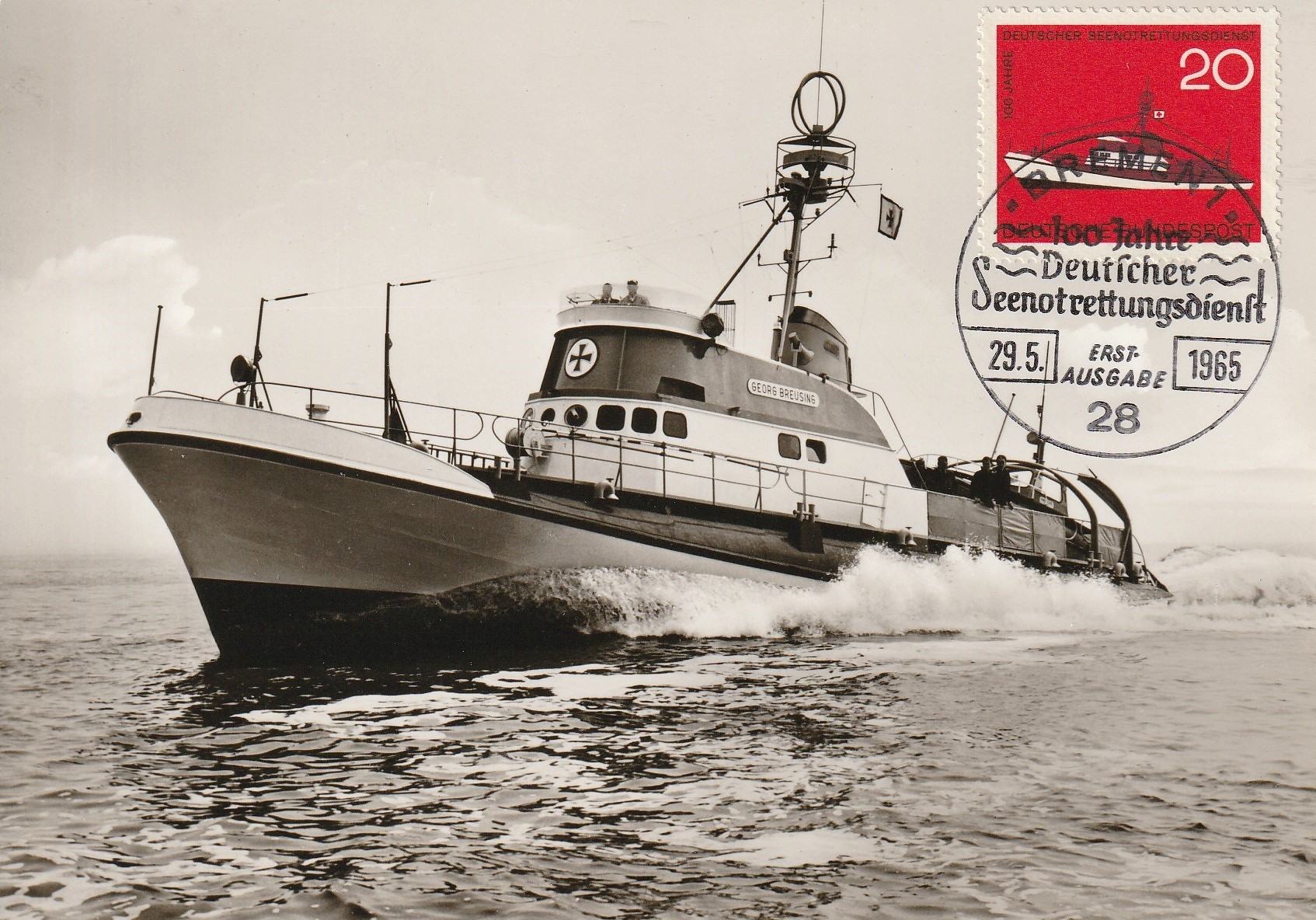 |
 |
Date of issue:22/07/2007
Editor of postcard: Norbert Tamas
FDI
postmark Göteborg
The Swedish company, SSRS is an institution of
volunteers founded in 1907. Today it has 140 boats in 67 rescue stations.
The Victoria class cruiser, with an overall length of 11.8 m, reaches 38
knots with two 500 HP engines. She is armed by 3 or 4 volunteer rescuers. |
Date of issue:20/07/2001
Editor of postcard:Guardia
Costiera
FDI postmark Civitavecchia
In Italy, rescue at sea is
carried out by the Port Harbors - Coast Guards (Corpo delle capitanerie di
porto - Guardia Costiera in Italian). The service has many resources,
including planes, helicopters and around 600 vessels positioned in 113 ports
. With 3 crew on board, the class 500 patrol boat, long 10.40 m is
propelled at 37 knots with two engines of 435 HP. |
 |
 |
Date of issue:20/07/2007
Editor of postcard:Capitanerie di Porto Gaeta
FDI postmark Viareggio
With her aluminum hull, the CP856, 13 m long, can
reach a speed of 32 knots with a range of 160 nautical miles against 220 for
the 500 class. |
